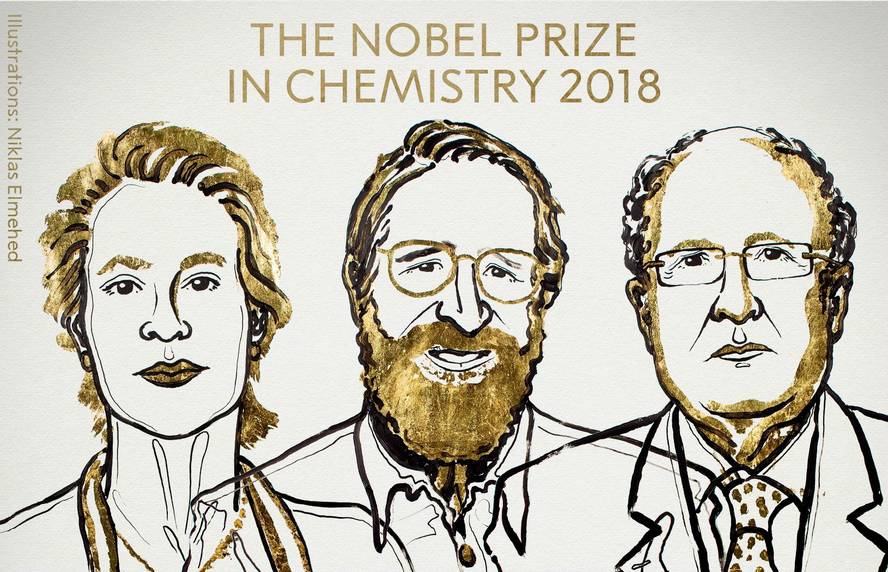Nobel Prize in Chemistry 2018 for those who have improved the ability to evolve proteins
The Nobel Prize in Chemistry will be awarded this year by Frances Arnold, George Smith and Gregory Winter, the first to develop a directed enzyme evolution and the other two to develop the phage display technique for drug creation. According to the Nobel Foundation, award-winning researchers “have taken control of evolution and developed proteins that, with their same principles, solve many problems of humanity.”

Two Americans and one Briton will receive this year the Nobel Prize in Chemistry. One of them female: Frances Arnold. He is a professor at the California Institute of Technology, where he investigates evolution for medical, chemical and energy applications. In 1993 he developed the first routed evolution of enzymes, so he received the Nobel Prize.
Somehow, Arnold accelerates the evolutionary process by introducing mutations into the protein sequence. It tests the effect of these mutations, and if a mutation improves the function of the protein, it is followed that way and the protein is optimized. The refinement of the methodology created by Arnold has created the techniques that are now used to create new catalysts. These enzymes generate more environmentally friendly chemicals such as fuels for a greener transport sector.
In fact, Arnold received two years ago for the same work the Millennium Technology Prize, also known as the Nobel Prize in Technology. “Nature is the best inventor in the world,” he acknowledged. She was the first award-winning woman and this time the fifth recipient of the Nobel Prize in Chemistry.
The technique of phage exhibitors, an innovative method for drug development
The second part of the Nobel Prize in Chemistry has been collected by an antibody creation methodology. The new Nobel Prize winner George Smith developed in 1985 a technique known as demonstrative phage technique. He used bacteriophages – viruses that infect bacteria – to form new proteins. By this method, the DNA encoding a certain protein is artificially introduced into the gene of a superficial protein of a bacteriophage. Thus, the bacteriophage shows the protein on the surface, outward, and it is easy to know with which other molecule interacts the protein.
Later, Gregory Winter developed this method and used it to create new drugs. In fact, the knowledge of the molecules to which proteins are associated makes the technique very appropriate to obtain enzyme inhibitors or antibodies. Thus, it is currently used for the creation of numerous drugs: antibodies neutralizing toxins, antibodies that neutralize autoimmune diseases, as well as for the identification and diagnosis of tumor antigens and for the development of anti therapies.
The three award-winning researchers have created methods for the creation of new proteins. The Nobel Foundation wanted to highlight the evolution: “Life has spread everywhere: hot springs, deep oceans and deserts. All this because evolution has been able to solve some chemical problems: it has been transforming and improving proteins, generating a huge diversity. This year’s Nobel Prize in Chemistry has been inspired by evolutionary capacity and have used these same principles to develop proteins capable of solving humanity’s chemical problems.” It remains to be seen what new possibilities will open the winning methods in the future.





